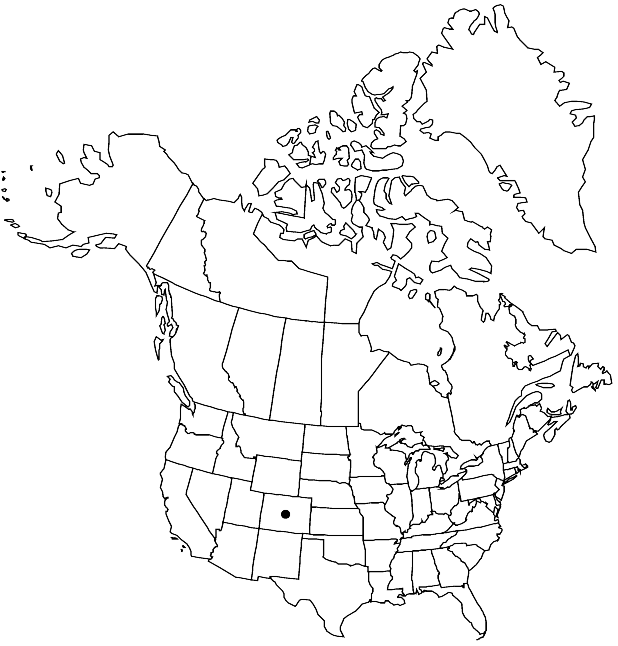Draba exunguiculata
Revis. Drabas W. N. Amer., 46. 1941.
Perennials; (densely cespitose); caudex branched (covered with persistent, somewhat thickened, dry petioles); not scapose. Stems unbranched, 0.15–0.7 dm, glabrous throughout or sparsely pubescent, trichomes simple, 0.3–0.9 mm. Basal leaves rosulate; petiolate; petiole ciliate, (trichomes simple, 0.3–1.1 mm); blade linear to linear-oblanceolate, (0.5–)0.8–2(–2.5) cm × 1–3 mm, margins entire, (pubescent as petiole), surfaces abaxially sparsely pubescent with simple and stalked, 2- or 3-rayed trichomes, 0.1–0.4 mm, adaxially glabrous or subapically sparsely pubescent with simple trichomes. Cauline leaves 1–4; sessile; blade linear to linear-oblanceolate, margins entire, surfaces pubescent as basal. Racemes 4–13(–20)-flowered, ebracteate, elongated in fruit; rachis not flexuous, usually glabrous, rarely sparsely pubescent, trichomes simple, to 1 mm. Fruiting pedicels divaricate-ascending, straight or slightly curved upward, 1–6 mm, usually glabrous, rarely with few, simple trichomes. Flowers: sepals ovate, 2–2.5 mm, pubescent, (trichomes simple); petals (erect), yellow, obovate, 2–2.5(–3) × 1.5–2 mm, (not clawed); anthers oblong, 0.6–0.9 mm. Fruits lanceolate to oblong-lanceolate, plane, flattened, 5–13 × 1.5–3 mm; valves glabrous; ovules 20–24 per ovary; style 0.3–1 mm. Seeds ovoid, 1–1.3 × 0.6–0.8 mm. 2n = 56 ± 5.
Phenology: Flowering Jul–Aug.
Habitat: Open knolls, talus, gravelly alpine slopes, rocky alpine tundra
Elevation: 3600-4300 m
Discussion
Of conservation concern.
Draba exunguiculata occupies alpine areas of Clear Creek, El Paso, Grand, and Summit counties in central Colorado. Draba grayana is found in the same general area; both species are apomicts that occasionally grow sympatrically. Draba exunguiculata is easily distinguished from D. grayana by having stems and fruiting pedicels glabrous or sparsely pubescent with simple trichomes (versus moderately to densely pubescent with simple and 2- or 3-rayed trichomes), and by having erect, non-clawed petals, 2–3 mm and slightly longer than sepals (versus flared, clawed petals 3–4.5 mm and nearly twice as long as sepals).
Selected References
None.
